
November 2012
Welcome to Net Results EXPRESS
Net Results EXPRESS (NRx) is an award-winning, monthly e-newsletter highlighting medical and scientific breakthroughs, major grants and honours awarded, and other research-related events at UHN. Through NRx you can read about ongoing research at our five research institutes, the Ontario Cancer Institute (OCI), the Toronto General Research Institute (TGRI), the Toronto Western Research Institute (TWRI), the Toronto Rehabilitation Institute (TRI) and the Techna Institute for the Advancement of Technology for Health (TECHNA). We hope you will find this newsletter informative and helpful. If you have feedback or questions, please contact www@uhnresearch.ca. Christopher J. Paige, PhD, FCAHS |
Heart Disease: Treating Patients Diagnosed with Diabetes
From 2005 to 2010, 1900 patients diagnosed with multi-vessel coronary artery disease and diabetes across 140 international centres were enrolled in the study. Patients received either coronary artery bypass grafting (CABG), where healthy blood vessels are surgically transplanted to enable the bypassing of narrowed arteries, or percutaneous coronary intervention (PCI), in which a balloon is inserted into the blocked artery site and a tube, called a stent, is placed to permanently keep the artery open. After a follow-up with patients, Dr. Farkouh and his colleagues found that those undergoing CABG were significantly less likely to experience a heart attack or death. However, these patients were observed to suffer from a higher risk of stroke in the early post-procedure period compared to patients undergoing PCI. “This data provides a clear indication that CABG results in decreased long-term mortality as compared with PCI with stents,” explains Dr. Farkouh. “Thus, CABG and accompanying medical therapy is an important treatment option for patients with diabetes and coronary artery disease.” Strategies for multivessel revascularization in patients with diabetes. Farkouh ME, Domanski M, Sleeper LA, Siami FS, Dangas G, Mack M, Yang M, Cohen DJ, Rosenberg Y, Solomon SD, Desai AS, Gersh BJ, Magnuson EA, Lansky A, Boineau R, Weinberger J, Ramanathan K, Sousa JE, Rankin J, Bhargava B, Buse J, Hueb W, Smith CR, Muratov V, Bansilal S, King III S, Bertrand M, Fuster V. New England Journal of Medicine. 2012 November 4. [Pubmed abstract] This work was supported by the National Heart, Lung and Blood Institute, Cordis, Johnson & Johnson, Boston Scientific, Eli Lilly, Sanofi-aventis and Bristol-Myers Squibb. |
Cancer: Palliative Care Referral Practices in Oncology
A new study by OCI Scientist Dr. Camilla Zimmermann, which surveyed 603 oncologists across Canada, has found that most oncologists usually or always referred their patients to palliative care services. However, oncologists who had more comprehensive and readily available services tended to refer their patients for palliative care earlier, as did those oncologists who had access to services that accepted patients still receiving chemotherapy. Explaining the findings of the study, Dr. Zimmermann says, “Patients with cancer have many complex physical and psychosocial problems that don’t necessarily manifest late in the disease course. Palliative care teams and oncologists need to work more in collaboration to provide holistic care for cancer patients at all stages of the disease.” Referral practices of oncologists to specialized palliative care. Wentlandt K, Krzyzanowska MK, Swami N, Rodin GM, Le LW, Zimmermann C. Journal of Clinical Oncology. 2012 October 29. [Pubmed abstract] This work was supported by the Canadian Cancer Society and the Ontario Ministry of Health and Long-Term Care. |
Cancer: Novel Imaging and Therapeutic In One Tiny Package
This study demonstrated that porphysomes can easily enhance medical imaging by inserting a radioactive isotope of copper. The radiation given off by the copper isotope can be detected by positron emission tomography (PET) equipment to visualize the porphysome distribution in the body. Outlining the implications of this work, co-first authors and OCI graduate students Tracy Liu and Thomas MacDonald say, “One day, a doctor could inject porphysomes carrying a drug into a patient, and use PET imaging to track exactly how much of the drug was actually delivered to the tumour.” “The elegance of this technique for tracking nanoparticles in the body is what attracted the interest of the reviewers,” says Dr. Zheng. “Adding the label is easy, and it’s very stable.” Intrinsically copper-64-labeled organic nanoparticles as radiotracers. Liu TW, Macdonald TD, Shi J, Wilson BC, Zheng G. Angewandte Chemie International Edition. 2012 November 14. [Pubmed abstract] This work was supported by the Canadian Institutes of Health Research, the Ontario Institute for Cancer Research, the Natural Sciences and Engineering Research Council of Canada, the Canada Foundation for Innovation, the Princess Margaret Cancer Foundation, MaRS Innovation and the Joey and Toby Tanenbaum/Brazilian Ball Chair in Prostate Cancer Research. |
Bipolar Disorder: Insulin Improves the Mental Performance of Bipolar Patients
Non-diabetic patients with bipolar disorder were treated with intranasal insulin for a period of eight weeks before their cognitive performance was evaluated. Results indicated that compared to placebo, the patients who received intranasal insulin had a significant improvement in some measures of ‘executive functions’. These are brain functions that control important tasks such as working memory, problem solving, task switching or verbal reasoning. Insulin-treated patients also had quicker responses when their verbal memory was tested. Explains Dr. McIntyre, “Intranasal insulin is safe, well-tolerated and effective in improving the cognitive activity of bipolar patients. It may therefore be helpful as a supplementary treatment for patients with bipolar disorders particularly those with deficits in executive functions.” The Mood Disorders Psychopharmacology Unit at UHN is currently evaluating intranasal insulin in non-diabetic adults with major depressive disorder, with results expected by the end of 2013. A randomized, double-blind, controlled trial evaluating the effect of intranasal insulin on neurocognitive function in euthymic patients with bipolar disorder. McIntyre RS, Soczynska JK, Woldeyohannes HO, Miranda A, Vaccarino A, Macqueen G, Lewis GF, Kennedy SH. Bipolar Disorders. 2012 November 14. [Pubmed abstract] This work was supported by the Stanley Medical Research Institute. |
Sleep Apnea: Making Waves in the Link to Renal Disease
In order to explore the hypothesis that excess fluid accumulation in the upper airway causes sleep apnea in ESRD patients, Dr. Bradley, in collaboration with Drs. Christopher Chan and Narinder Paul of the Hemodialysis unit and the Joint Department of Medical Imaging, respectively, used magnetic resonance imaging (MRI) to examine the necks of reclined patients with and without sleep apnea. He found that two factors could predict sleep apnea—the volume of one of the jugular veins in the neck and the water content present in the soft tissue surrounding the upper airway. Despite the high occurrence of sleep apnea in ESRD patients, many remain undiagnosed. Untreated sleep apnea in these patients is associated with higher rates of cardiovascular-related deaths, from which close to a fifth of ESRD patients die annually. Dr. Bradley emphasizes that, “These findings help explain why intensified dialysis relieves sleep apnea in ESRD patients and suggest that therapeutic interventions designed to remove excess fluids may benefit these patients.” Relationship of pharyngeal water content and jugular volume with severity of obstructive sleep apnea in renal failure. Elias RM, Chan CT, Paul N, Motwani SS, Kasai T, Gabriel JM, Spiller N, Bradley TD. Nephrology Dialysis Transplantation. 2012 November 7. [Pubmed abstract] This work was supported by the Canadian Institutes of Health Research, Fuji-Respironics Inc. and the Coordenação de Aperfeiçoamento de Pessoal de Nível Superior (Brazil). |
 |
![]()
 TWRI Senior Scientist Dr. Murray Urowitz has been awarded a Queen Elizabeth Diamond Jubilee Medal. Dr. Urowitz was nominated by the Canadian Rheumatology Association in recognition of his longstanding contributions to lupus research and his work in the field of rheumatology.
TWRI Senior Scientist Dr. Murray Urowitz has been awarded a Queen Elizabeth Diamond Jubilee Medal. Dr. Urowitz was nominated by the Canadian Rheumatology Association in recognition of his longstanding contributions to lupus research and his work in the field of rheumatology.The medal, created to mark 60 years of The Queen’s reign, is given to Canadians in honour of their contributions to society and their achievements that have brought prestige to Canada. Dr. Urowitz will be presented with the medal at the Annual Scientific Meeting of the Canadian Rheumatology Association on February 15, 2013.
 TWRI Senior Scientist Dr. Andres Lozano is the recipient of the 2012 Olivecrona Medal from the Karolinska Institutet. Dr. Lozano was honoured for his work on deep brain stimulation, which he pioneered as a treatment for several disorders, including depression, Huntington’s disease and Alzheimer’s disease.
TWRI Senior Scientist Dr. Andres Lozano is the recipient of the 2012 Olivecrona Medal from the Karolinska Institutet. Dr. Lozano was honoured for his work on deep brain stimulation, which he pioneered as a treatment for several disorders, including depression, Huntington’s disease and Alzheimer’s disease.Established in 1976, the award honours Dr. Herbert Olivecrona and acknowledges outstanding neurosurgeons and neuroscientists who contribute excellence to the neurosurgical field, based on development of microsurgical techniques, pedagogical skills or scientific contributions.
The CSIM is a non-profit professional society that fosters leadership and excellence in the practice of general internal medicine through research, education and advocacy for health promotion and disease management.
 TWRI Affiliate Scientist Dr. Rosemary Martino has been elected a Fellow of the American Speech-Language-Hearing Association (ASHA). She received this honour at the 2012 ASHA Convention in Atlanta this November. The Fellowship is one of the highest forms of recognition given by ASHA in acknowledgment of an individual’s accomplishments in the fields of swallowing and communication disorders research and is a public declaration of Dr. Martino’s outstanding professional achievements.
TWRI Affiliate Scientist Dr. Rosemary Martino has been elected a Fellow of the American Speech-Language-Hearing Association (ASHA). She received this honour at the 2012 ASHA Convention in Atlanta this November. The Fellowship is one of the highest forms of recognition given by ASHA in acknowledgment of an individual’s accomplishments in the fields of swallowing and communication disorders research and is a public declaration of Dr. Martino’s outstanding professional achievements.ASHA is the leading association of audiologists, speech-language pathologists and speech, language and hearing scientists and has over 150,000 members and affiliates.
Feedback
Net Results EXPRESS is brought to you by UHN Research Communications. We hope you have enjoyed receiving this message. If you have any feedback, please email www@uhnresearch.ca.
To access archived issues of Net Results EXPRESS, visit uhnresearch.ca/news/netresultsexpress
Some images adapted from the image archives of stock.xchng.ca, Wikipedia and Thomas MacDonald.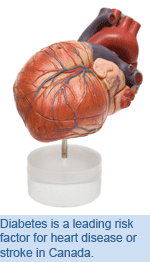 When an organ receives a low amount of blood due to a narrow or blocked blood vessel, a common method of correcting this condition is to surgically reroute the blood supply, termed revascularization. Patients with multiple blocked arteries supplying the heart undergo this potentially life-saving procedure; of these patients, approximately 25% have diabetes. In a recent study, published in the prestigious New England Journal of Medicine, TGRI Clinician Scientist Dr. Michael Farkouh examined which form of revascularization resulted in optimal patient outcomes for those undergoing the procedure.
When an organ receives a low amount of blood due to a narrow or blocked blood vessel, a common method of correcting this condition is to surgically reroute the blood supply, termed revascularization. Patients with multiple blocked arteries supplying the heart undergo this potentially life-saving procedure; of these patients, approximately 25% have diabetes. In a recent study, published in the prestigious New England Journal of Medicine, TGRI Clinician Scientist Dr. Michael Farkouh examined which form of revascularization resulted in optimal patient outcomes for those undergoing the procedure.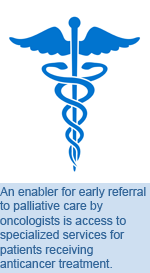 The needs of patients with advanced cancers are complex and require a personalized approach to lessen both physical and psychosocial symptoms. This care may be best provided by multidisciplinary teams through specialized palliative care services that take a holistic approach to treatment. However, patients usually receive palliative services within thirty to sixty days of death and often only in the last days of life.
The needs of patients with advanced cancers are complex and require a personalized approach to lessen both physical and psychosocial symptoms. This care may be best provided by multidisciplinary teams through specialized palliative care services that take a holistic approach to treatment. However, patients usually receive palliative services within thirty to sixty days of death and often only in the last days of life.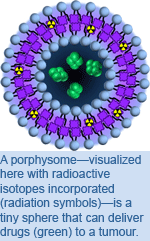 A recent paper from OCI Senior Scientists and Techna Core Leads Drs.
A recent paper from OCI Senior Scientists and Techna Core Leads Drs. 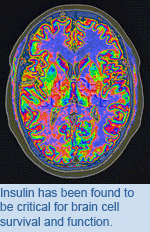 Mental disorders are a leading cause of disability in Canada, largely due to the cognitive deficits they incur. For example, patients with bipolar disorders often exhibit deficits in neurocognitive performance (e.g. forming memories, concentration) that cause and maintain functional impairment, inviting the need to develop novel treatments that can treat and/or prevent cognitive difficulties. Currently there is no effective or reliable treatment to improve cognitive performance in any psychiatric population. However, a new study by TWRI Clinician Scientist Dr.
Mental disorders are a leading cause of disability in Canada, largely due to the cognitive deficits they incur. For example, patients with bipolar disorders often exhibit deficits in neurocognitive performance (e.g. forming memories, concentration) that cause and maintain functional impairment, inviting the need to develop novel treatments that can treat and/or prevent cognitive difficulties. Currently there is no effective or reliable treatment to improve cognitive performance in any psychiatric population. However, a new study by TWRI Clinician Scientist Dr. 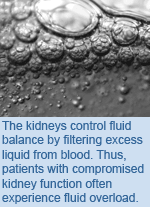 End stage renal disease (ESRD) is an advanced form of chronic kidney disease that leads to the progressive loss of kidney function, if left untreated. Half of ESRD patients experience sleep apnea—a rate that is five times higher than in the general population. While the reason for this is elusive, an explanation is suggested by the fact that sleep apnea is often resolved when ESRD patients intensify dialysis, a process that removes waste and excess fluid from the blood. In support of the idea that excess fluids are a factor, previous findings by TRI and TGRI Senior Scientist Dr.
End stage renal disease (ESRD) is an advanced form of chronic kidney disease that leads to the progressive loss of kidney function, if left untreated. Half of ESRD patients experience sleep apnea—a rate that is five times higher than in the general population. While the reason for this is elusive, an explanation is suggested by the fact that sleep apnea is often resolved when ESRD patients intensify dialysis, a process that removes waste and excess fluid from the blood. In support of the idea that excess fluids are a factor, previous findings by TRI and TGRI Senior Scientist Dr.